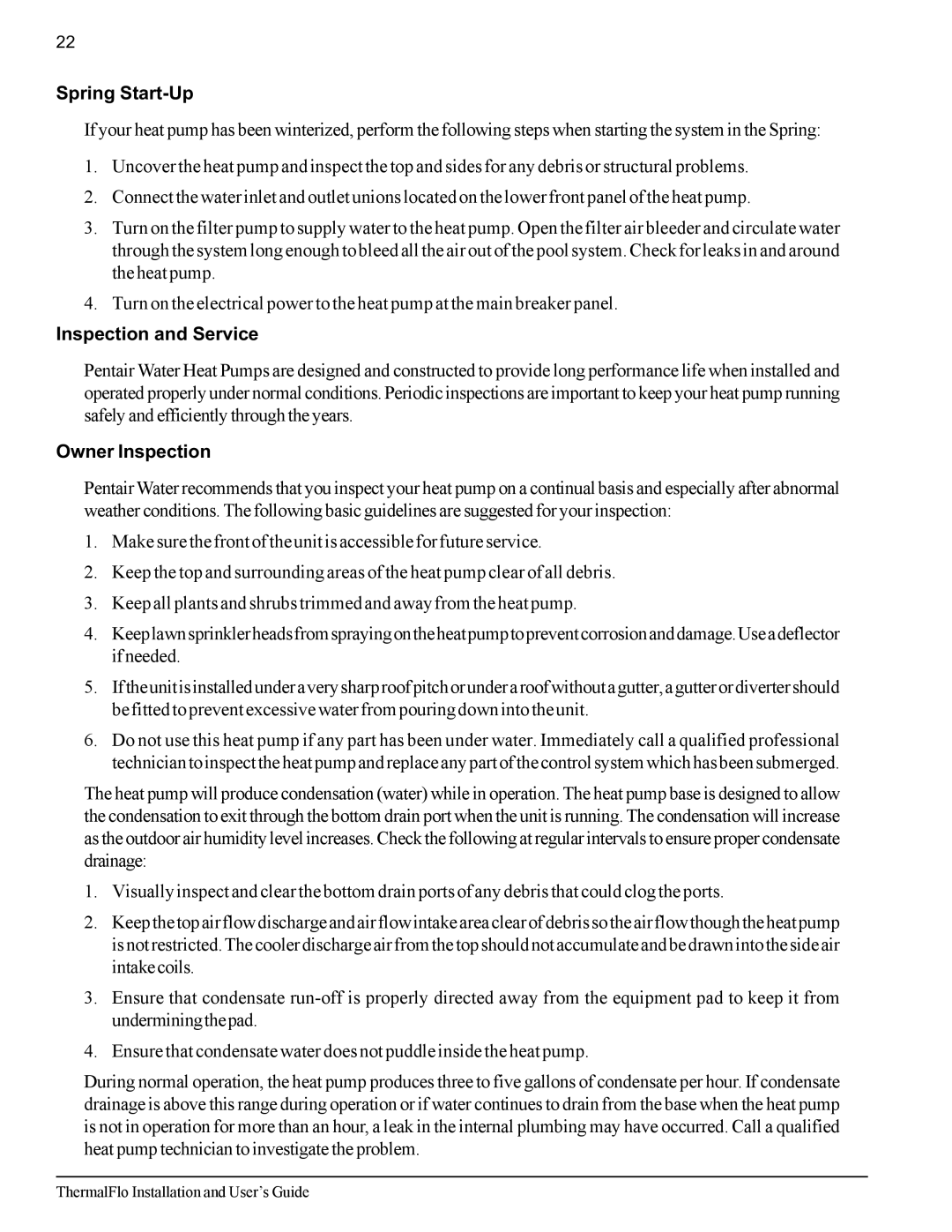ThermalFlo specifications
Pentair ThermalFlo is a leading-edge solution designed to address the evolving demands of thermal management in various industrial applications. As organizations prioritize energy efficiency and temperature regulation, ThermalFlo emerges as a robust offering from Pentair, a global leader in water and fluid management.One of the standout features of Pentair ThermalFlo is its innovative heat tracing technology. This system employs electrical heat tracing cables that are strategically engineered to maintain desired temperatures in pipes, valves, and other critical components. The design minimizes the risks of freezing, ensuring that fluids can flow seamlessly, even in harsh environments. Moreover, it enhances safety by reducing the likelihood of pipe bursts due to thermal stress.
ThermalFlo also incorporates advanced insulation technologies that complement its heat tracing capabilities. The combination of these two approaches ensures optimal energy efficiency, reducing heat loss and lowering operational costs. When used in conjunction with smart monitoring systems, organizations can achieve real-time temperature control, allowing for proactive adjustments that enhance system efficiency.
Another significant characteristic of Pentair ThermalFlo is its versatility. This solution can be customized to suit various applications, from oil and gas industries to food processing and pharmaceuticals. The adaptability of ThermalFlo makes it an ideal choice for facilities looking to improve their thermal strategies without compromising on performance.
In addition to its technical features, Pentair ThermalFlo emphasizes sustainability. By promoting energy efficiency and reducing heat loss, the system contributes to lower carbon footprints for its users. This aligns with the growing trend of adopting environmentally responsible practices within industry, showcasing Pentair’s commitment to innovative solutions that meet modern challenges.
Furthermore, the installation and maintenance of ThermalFlo systems are streamlined, with user-friendly features that simplify the process for engineers and technicians. Its robust design ensures long-lasting performance, reducing downtime and maintenance costs over time.
In conclusion, Pentair ThermalFlo stands out in the marketplace through its blend of innovative technologies, energy efficiency, and adaptability across different industries. As businesses increasingly seek effective thermal management solutions, ThermalFlo represents an investment in reliability, safety, and sustainability.
